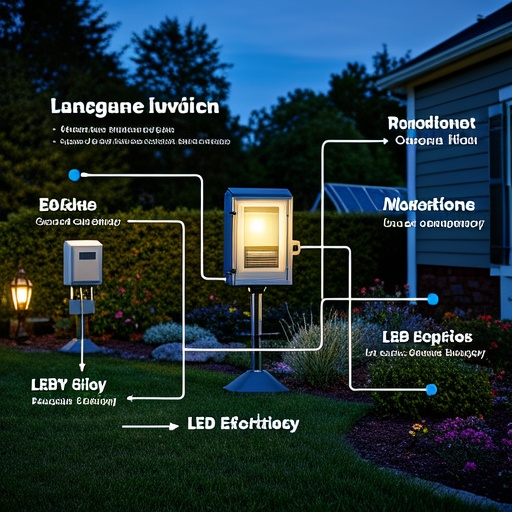Step into Landscape Light Power Supply and delve into the energy source of landscape lighting
Stepping into the world of landscape lighting reveals a realm where aesthetics meet functionality, all powered by an intricate dance of electrical engineering. The magic that transforms gardens into enchanting evening retreats or highlights architectural features after sunset hinges on a reliable and efficient power supply system. This article delves deep into the heart of landscape lighting, unraveling the mysteries of its energy sources and shedding light on the technologies that make it possible.
The Essence of Landscape Lighting Power Supply
At its core, landscape lighting relies on a power supply to convert electricity into the gentle glow that enhances outdoor spaces. Unlike indoor lighting, which often taps directly into a building's electrical system, outdoor lighting must contend with environmental factors such as weather exposure, distance from power sources, and safety considerations. Thus, understanding the power supply becomes paramount in ensuring both beauty and practicality.
Traditional vs. Modern Approaches
Traditionally, landscape lighting has been synonymous with high-voltage systems, typically running on 120 volts, similar to household wiring. These setups require extensive trenching for cables and the installation of waterproof fixtures to withstand the elements. While effective, they can be costly and pose safety risks during installation and maintenance.
In recent years, however, there has been a significant shift towards lower-voltage and alternative energy solutions. Low-voltage systems, operating at 12 or 24 volts, offer increased safety and flexibility, allowing for easier DIY installations and less invasive cable runs. They achieve this by using a transformer to step down the voltage from the main supply, making them ideal for paths, decks, and accent lighting.

Solar Power: Harnessing the Sun
One of the most sustainable advancements in landscape lighting is the integration of solar power. Solar-powered lights capture sunlight during the day through photovoltaic panels and store it in rechargeable batteries. As dusk falls, these stored energies illuminate LED bulbs, creating a zero-emission lighting solution. Solar lighting is particularly suited for areas with ample sunlight and where running electrical cables is impractical or costly. Its eco-friendliness and low maintenance requirements make it a popular choice for environmentally conscious homeowners.
LED Technology: Efficiency Redefined
Light Emitting Diodes (LEDs) have revolutionized the landscape lighting industry due to their exceptional energy efficiency and longevity. Compared to traditional incandescent bulbs, LEDs consume significantly less power while emitting brighter, more focused light. This translates into reduced energy costs and fewer replacements over time. Moreover, LEDs come in a spectrum of colors and can be easily dimmed or controlled via smart systems, adding another layer of customization to outdoor lighting designs.
Smart Controls and Integration
The advent of smart home technology has also permeated the realm of landscape lighting. Smart controls allow users to schedule lighting scenes, adjust brightness remotely, and even sync lights with music or security systems. By integrating Wi-Fi or Bluetooth-enabled devices, homeowners can now manage their outdoor lighting with ease, enhancing convenience and energy management.
Considerations for Choosing a Power Supply
When deciding on the right power supply for your landscape lighting project, several factors come into play:
1. Location: Areas with limited access to power may benefit more from solar options.
2. Scale: Larger projects might necessitate a combination of low-voltage and line-voltage systems.
3. Budget: Initial investment versus long-term savings should be weighed, considering energy efficiency and maintenance costs.
4. Environmental Impact: Solar and LED options contribute to greener practices.
5. Safety: Low-voltage systems reduce shock hazards during installation and operation.
Conclusion: Illuminating the Future
As we continue to embrace sustainability and technological advancements, the landscape lighting industry evolves, offering more efficient and environmentally friendly solutions. From harnessing the sun's energy to leveraging the precision of LEDs and the convenience of smart controls, the power supply behind our outdoor illuminations plays a pivotal role. By understanding these components, homeowners and designers alike can create stunning yet responsible outdoor lighting schemes that not only enhance living spaces but also tread lightly on our planet. Step into the world of landscape light power supply, and illuminate your surroundings with knowledge and creativity.
 Triac Dimmer Power Supply: W
Triac Dimmer Power Supply: W
 Triac Dimmer Power Supply: H
Triac Dimmer Power Supply: H
 Triac Dimmer Power Supply: C
Triac Dimmer Power Supply: C
 Triac Dimmer Power Supply: H
Triac Dimmer Power Supply: H
